#Jeff Koons' Balloon Rabbit
Text
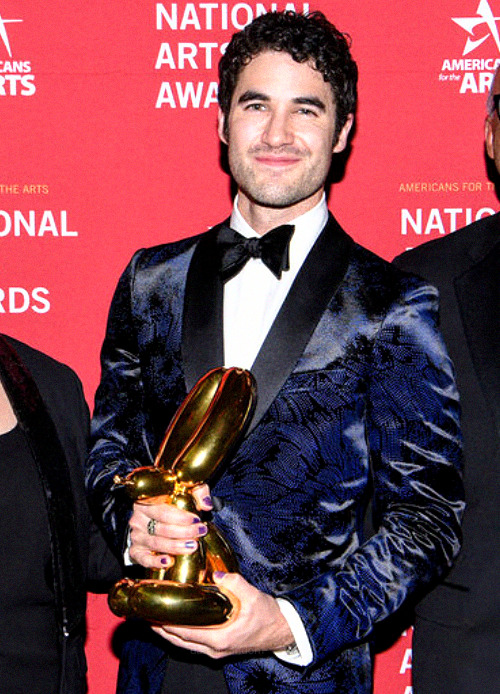
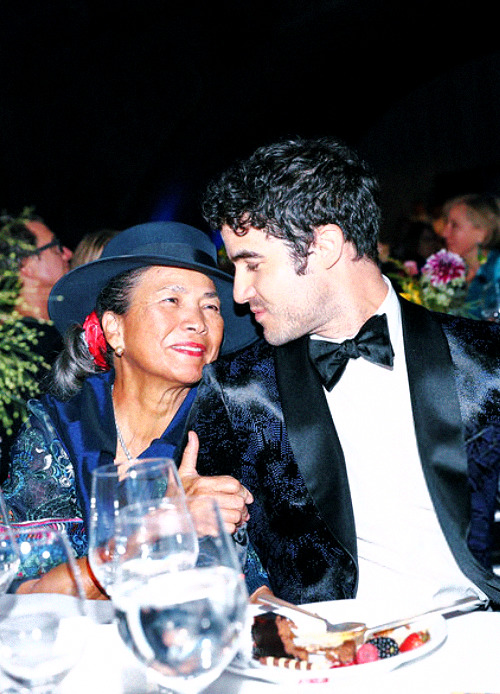
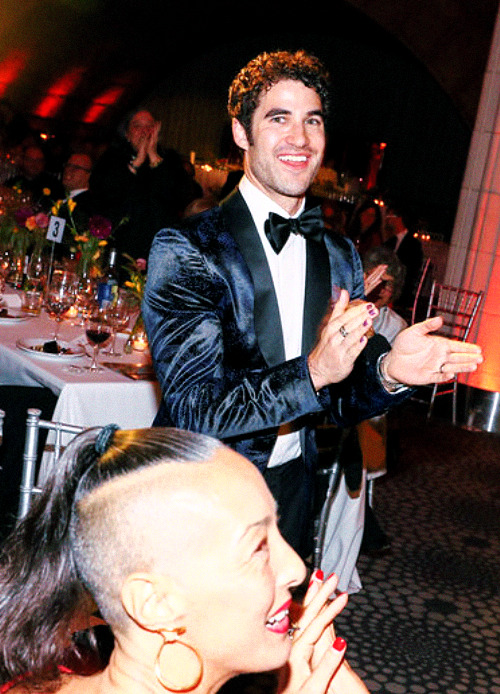
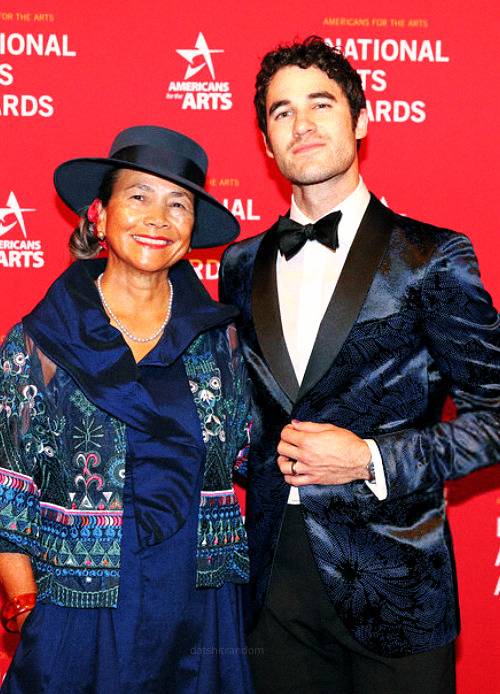
Darren Criss and Cerina Criss at the Americans for the Arts 2022 National Arts Awards | October 17, 2022
#Darren Criss#Mama Criss#Americans for the Arts#National Arts Awards 2022#Ted Arison Young Artist Award#Jeff Koons' Balloon Rabbit#please do not repost
69 notes
·
View notes
Photo
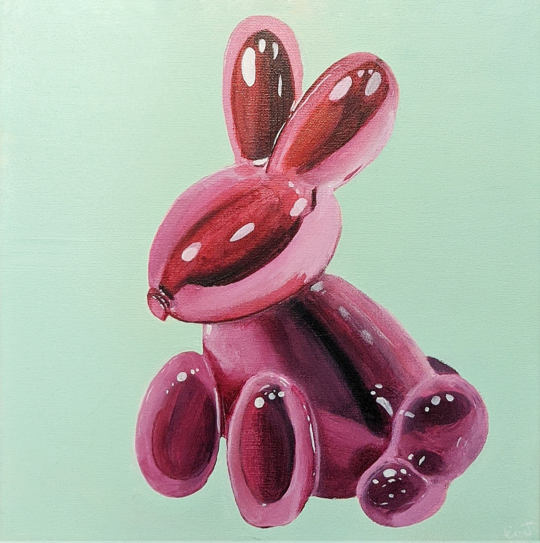
Metallic Balloon Bunny. Inspired by Jeff Koons’ sculptures of balloon animals. Acrylic Painting. 2019.
1 note
·
View note
Text
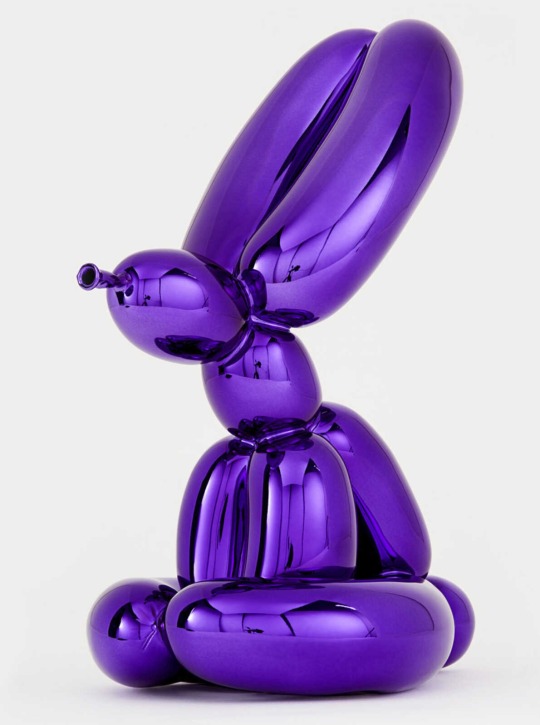
Balloon Rabbit (Violet), 2019, Jeff Koons
80 notes
·
View notes
Photo
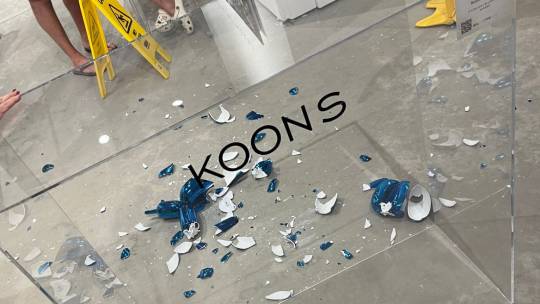

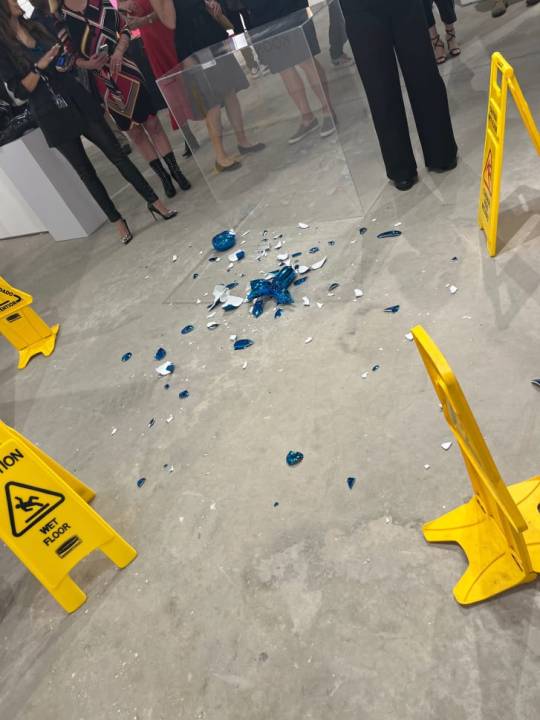

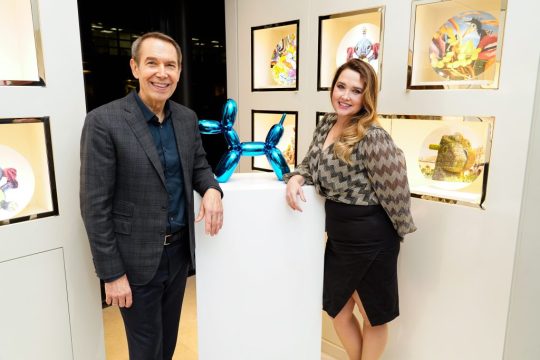

Art Fair Visitor Breaks $42,000 Jeff Koons Balloon Dog Sculpture
The artist Jeff Koons' famous sculptures might look like they're made from balloons -- but the works are actually fragile, as one art fair attendee found out when she knocked over a $42,000 Koons piece Thursday, causing it to shatter.
A blue balloon dog sculpture created by Koons broke into tiny shards when a visitor accidentally kicked its podium, according to the gallery hosting the piece.
Bel-Air Fine Art was displaying the piece at its booth at Art Wynwood, a contemporary art fair in Miami.
In a statement shared in an email, the gallery's district manager, Cédric Boero, who was managing the Art Wynwood booth, said that the gallery serves as "one of the official representatives for the famous Jeff Koons balloon dogs sculptures."
"Of course it is heartbreaking to see such an iconic piece destroyed," said Boero.
He said the piece fell after an unnamed art collector visiting the booth unintentionally kicked the pedestal during the fair's opening cocktail hour Thursday evening.
"The collector never intended to break the sculpture, in fact she never touched it with her hands," he said. "It was the opening cocktail, lots of people were on our booth, she gave unintentionally a little kick in the pedestal, which was enough to cause the sculpture to fall down."
"This kind of thing unfortunately happens, that is why the artwork was covered by insurance," he said.
The gallery shared photos of the sculpture reduced to scraps of ceramic lying on the floor. The pieces are currently waiting in a box to be evaluated by an insurance expert, according to the gallery. Bel-Air Fine Arts added that some collectors have offered to purchase the broken pieces.
The 2021 piece was entitled "Balloon Dog (Blue)" and valued at around $42,000, according to an email from Bel-Air Fine Art. The sculpture was made of porcelain and measured 40 x 48 x 16 cm. A total of 799 editions of the sculpture were made.
Koons' balloon animal figures are some of the most iconic -- and expensive -- sculptures in the contemporary art world. His pieces have fetched jaw-dropping sums at auction: "Rabbit" (1986) sold for $91 million at Christie's New York in 2019, and "Balloon Dog (Orange)" (1994-2000) sold for $58.4 million six years earlier.
He has created hundreds of renditions of the balloon dogs, some of them towering over 10 feet tall, and some of them just over a foot tall, like the sculpture that shattered.
By Zoe Sottile.
#Jeff Koons#Art Fair Visitor Breaks $42000 Jeff Koons Balloon Dog Sculpture#american artist#sculpture#balloon sculpture#2021 'Balloon Dog' Blue#art#artist#art work#art world#art news
20 notes
·
View notes
Text
Ok, now I get why my brain was confused about sculpture vs painting as the inspiration for Tae's tattoo. It was both. In the past I made a post with a drawing of the sculpture taken from a fan on X, so the factoid got stuck in my memory.

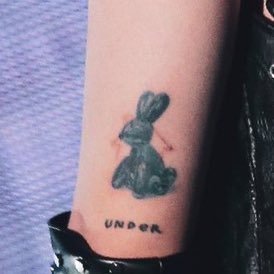
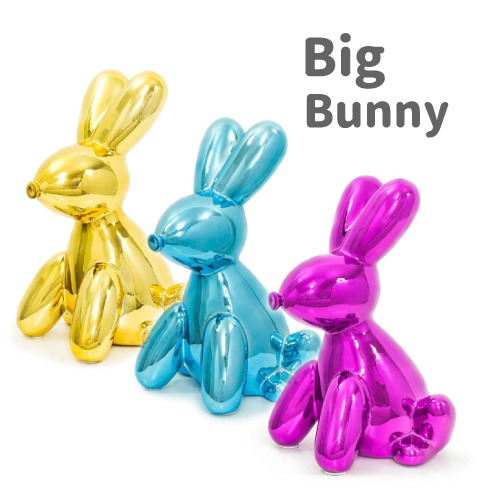
(It's probably even possible to find the exact picture the tattoo master was using, looking at the pose angle and reflections).
It is a ceramic money bank in a form of balloon toy. It comes in many colours and is produced by "Made by Humans". Their ad says "For the kiddos and those who remember the joy of dropping a coin and making a wish". It could be a new 2023 ad and only for the English site.
The bank was made in Jeff Koon's style, but it's not his rabbit. I couldn't find the drawing's artist (the very first picture here), I think it's a noname.
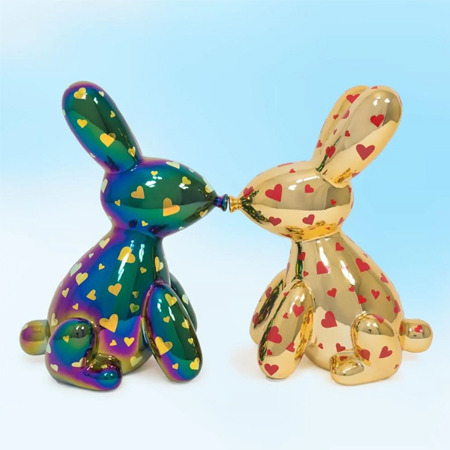
Another two things that might tie the bunny toy to Do is the blue colour and it looking like it is made of glass.
I think if we knew what ad was used in the store where Tae saw this bunny first it would have shed more light on why he was inspired.
2 notes
·
View notes
Link
0 notes
Text
[WEEK 8] The Art of Filters: Exploring the Intersection of Art and AR Filters
Remember the puppy ears and flower crowns? Those playful beginnings have evolved! AR filters are taking selfies to a whole new level, blurring the lines between casual snaps and artistic creations. But are they just a fun fad or something more? Get ready to explore the surprising link between AR filters and the art world!

From Snapshots to Art Exhibits: A Digital Makeover
Imagine taking a selfie and instantly transforming yourself into a character from a Monet painting. That's the magic of AR filters! These digital tools utilize augmented reality (AR) technology to overlay virtual objects onto your real-life photo. The result? Selfies transformed from everyday moments into artistic creations.

Real-World Examples: AR Filters in Action
Let's delve into some inspiring examples that showcase the potential of AR filters:
The Art Gallery of Ontario: Bridging the Gap Between Museums and Audiences
Ditch the dusty displays! The Art Gallery of Ontario (AGO) rocked the art world with a groundbreaking AR exhibit called ReBlink. Teaming up with digital artist Alex Mayhew, they took a fresh look at existing pieces in the collection. Mayhew's twist? Using AR to bring the art to life and make visitors see it in a whole new way.
Here's how it worked: visitors used their phones or tablets to activate AR features. This transformed the paintings – imagine characters in a peaceful scene suddenly jumping out and checking their phones!
youtube
But ReBlink wasn't just a tech gimmick. The artist wanted to use AR to boost engagement, not kill it. The idea? Get people to look up from their phones and focus on the art. And it worked! According to the AGO, a whopping 84% of visitors felt more connected to the art thanks to AR. Engagement was so strong that 39% went back for a second look after using the app – that's some serious artistic pull! (Coates 2019).
Tech-Savvy Artists: Blurring the Lines Between Physical and Digital
Forget those velvet ropes and "do not touch" signs! Pop art legend Jeff Koons is taking his giant balloon animals on a virtual world tour. In 2021, he teamed up with Snapchat to create AR filters that let you plop his playful sculptures anywhere – imagine a giant Koons puppy chilling in Central Park or a balloon rabbit hopping by the Sydney Opera House! This collaboration between artists and tech companies shows how AR can blur the lines between physical and digital art, making it accessible to everyone with a smartphone (Chow 2017).
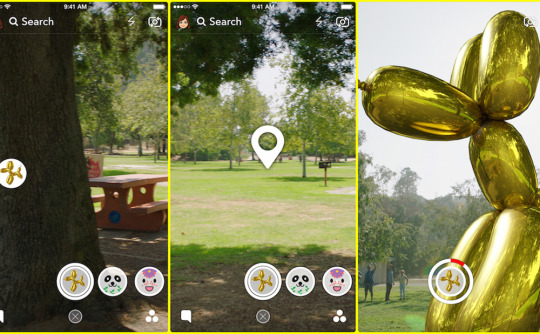
Speaking of blurring lines, Snap is at it again! This year, they're partnering with the Fine Arts Museums of San Francisco (FAMSF) to bring AR to the world of fashion. Get ready to step into a fashion show unlike any other. Visitors to the museum's exhibit on 20th and 21st-century women's clothing will use special AR "mirrors" to virtually try on the garments. So ditch the fitting room and see how you rock those vintage threads with a click of a button! (Hutchinson 2024).

Beyond the Fun Filters: The Broader Impact of AR
AR filters offer much more than just playful effects. They hold exciting possibilities for artists and art institutions:
Interactive Exhibitions: Transforming Galleries into Immersive Experiences
Imagine walking through a gallery and interacting with the artwork through AR filters. The Cleveland Museum of Art took this concept a step further. They have implemented an AR app called "ArtLens" which offers an interactive and educational experience for visitors. By pointing their smartphones at the artwork, visitors can access additional information, view related works, and even participate in interactive quizzes, draw, sculpt and paint in AR using 3D scans of objects in the museum’s collection to enhance their understanding of the art on display (Chan & Maxwell 2022).
youtube
Democratizing Art Creation: Putting the Brush in Everyone's Hand
AR filters empower anyone to be an artist, even for a fleeting selfie moment. With a smartphone, you can access a vast array of filters that can transform your selfies into pop art, glitch art, or even abstract masterpieces. This democratizes art creation by removing the barriers of expensive equipment and artistic training.
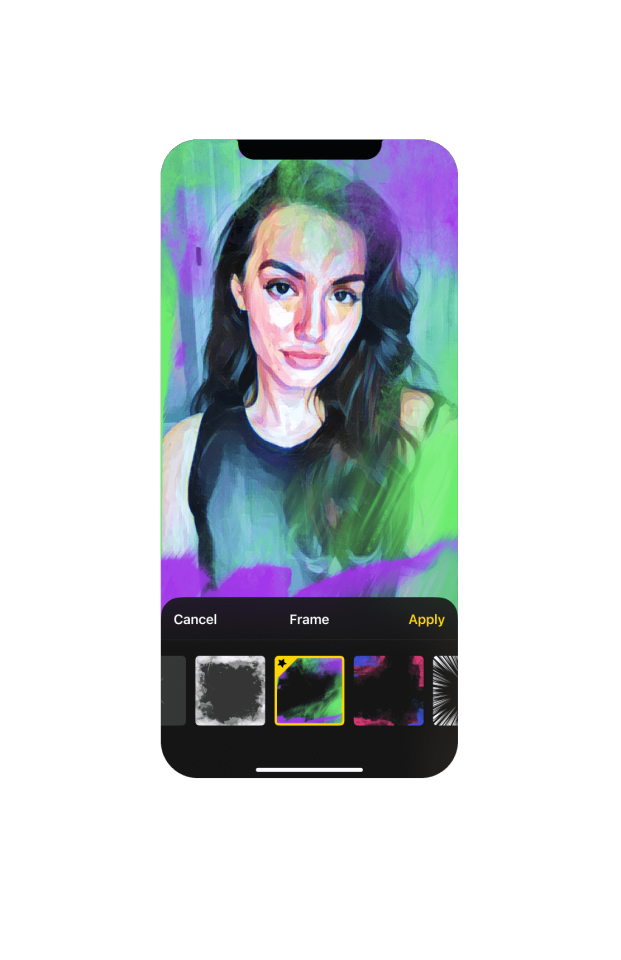
Preserving the Past: Breathing New Life into Lost Works
AR filters can be used to recreate historical surroundings or bring lost historical works back to life, offering a fresh perspective on the past. For instance, Vice World News has worked with Dentsu Webchutney on the “Unfiltered History Tour" – an unofficial guide to the British Museum that offers insight into the history of 10 iconic items via an interactive mobile site and a 10-part podcast series. The off-the-beaten-track tour encourages visitors to use Instagram filters and immersive audio to scan objects, from Egypt's Rosetta Stone to Greece's so-called Elgin Marbles, to unlock an augmented reality (AR) experience (Watson 2021).
youtube
The Future of Filtered Faces: A Glimpse into a World of Augmented Creativity
AR technology is rapidly evolving, and the possibilities for artistic expression with AR filters are truly endless. Here's a peek into what the future might hold:
Supercharged Filters: Pushing the Boundaries of Perception
Imagine filters that create 3D effects that seem to jump off your screen or even change your entire environment. We're already seeing the development of AR filters that can add realistic-looking objects and characters to your surroundings. This opens up new avenues for artistic exploration. Artists will be able to create immersive experiences that blend the physical and digital worlds, allowing viewers to step into the artwork itself.
Ethical Considerations: Balancing Creativity with Privacy
As AR filters become more powerful, ethical considerations become increasingly important. There are concerns about the potential for AR filters to be used to create deepfakes or manipulate reality. It will be crucial to develop safeguards to ensure that AR filters are used for creative expression and not for malicious purposes.
The future of AR filters is brimming with exciting possibilities. These digital tools have the potential to transform the way we create, experience, and interact with art. From museum exhibits to social media interactions, AR filters are poised to redefine the boundaries of artistic expression and make art more accessible than ever before. So, get ready to unleash your inner artist and embrace the world of augmented reality! 📸✨
References
Chan , S & Maxwell, J 2022, ‘Augmented Reality in Museums ’, www.ngv.vic.gov.au, viewed <https://www.ngv.vic.gov.au/augmented-reality-in-museums/>.
Chow, AR 2017, ‘Snapchat and Jeff Koons Collaborate on Augmented Reality Art Project’, The New York Times, 3 October, viewed 24 October 2019, <https://www.nytimes.com/2017/10/03/arts/design/snapchat-and-jeff-koons-collaborate-on-augmented-reality-art-project.html>.
Coates, C 2019, ‘How Museums are using Augmented Reality’, MuseumNext, viewed <https://www.museumnext.com/article/how-museums-are-using-augmented-reality/>.
Hutchinson, A 2024, ‘Snapchat’s New AR Art Activation With Fine Arts Museums of San Francisco’, Social Media Today, viewed <https://www.socialmediatoday.com/news/snapchat-provides-ar-art-activation-partnership-art-museums/704814/>.
Watson, I 2021, ‘Vice Media creates interactive tour of British Museum to expose disputed artefacts’, www.campaignlive.co.uk, viewed <https://www.campaignlive.co.uk/article/vice-media-creates-interactive-tour-british-museum-expose-disputed-artefacts/1735488>.
0 notes
Text
Unveiling The World's Most Expensive Auction Items
MN auctions have long been platforms where rarity, historical significance, and unparalleled craftsmanship converge, resulting in jaw-dropping price tags. From art masterpieces to rare collectibles, the world has witnessed some truly extraordinary items commanding astronomical prices.
Here's a glimpse into the realm of the world's most expensive auction items.
Leonardo da Vinci's "Salvator Mundi" (2017): At the heart of the art world, Leonardo da Vinci's "Salvator Mundi" stands as the most expensive painting ever sold at auction. This masterpiece, depicting Christ as the Savior of the World, fetched a staggering $450.3 million at a Christie's auction in 2017. The buyer shrouded in mystery, secured not just a work of art but a piece of history.
Picasso's "Les Femmes d'Alger" (Version 'O') (2015): Another art marvel, Pablo Picasso's vibrant and complex "Les Femmes d'Alger" reached an auction record of $179.4 million at Christie's in 2015. The piece pays homage to the artist's fascination with the harem theme and showcases his mastery of color and form, solidifying its status as one of the most valuable paintings ever sold.
Pink Star Diamond (2017): Diamonds are forever, and the Pink Star Diamond, a stunning 59.60-carat pink gem, holds the record for the most expensive diamond ever sold at auction. In 2017, it fetched an astonishing $71.2 million at a Sotheby's auction in Hong Kong. The diamond's rarity, combined with its exceptional color and clarity, contributed to its record-breaking sale.
Jeff Koons' "Rabbit" (2019): Contemporary art made its mark in the auction world with Jeff Koons' "Rabbit," a stainless-steel sculpture resembling a balloon animal. This iconic piece sold for $91.1 million at Christie's in 2019, setting a record for the highest price ever paid for a work by a living artist. Koons' "Rabbit" symbolizes the intersection of pop culture and high art.
1962 Ferrari 250 GTO (2018): In the realm of rare automobiles, the 1962 Ferrari 250 GTO holds the title as the most expensive car ever sold at auction. Crossing the block at RM Sotheby's in 2018, this pristine racing car commanded a staggering $48.4 million. The Ferrari 250 GTO's combination of performance, history, and limited production (only 36 were built) contributed to its record-breaking price.
Yuan Dynasty Vase (2010): Antique Chinese porcelain is highly coveted among collectors, and a 14th-century Yuan Dynasty vase proved this in 2010. Unearthed from a suburban London home, the vase soared to a remarkable $85.9 million at auction. Its rarity, age, and exquisite craftsmanship captivated bidders, making it one of the world's most expensive ceramic pieces.
Stradivarius Violin (2011): The timeless craftsmanship of Antonio Stradivari, the legendary violin maker, is revered by musicians and collectors alike. In 2011, a Stradivarius violin known as the "Lady Blunt" sold for an astounding $15.9 million at a charity
auction. The instrument's exceptional sound quality, coupled with its pristine condition, contributed to its record-breaking price.
Ming Dynasty "Chicken Cup" (2014): A small porcelain cup, known as the Ming Dynasty "Chicken Cup," became one of the world's most expensive Chinese artworks when it sold for $36.05 million at Sotheby's in 2014. Decorated with a simple yet charming scene of a rooster and hen with their chicks, this delicate cup's rarity and historical significance captivated collectors.
Action Comics #1 (2014): In the world of comic books, few items hold as much significance as Action Comics #1, featuring the debut of Superman. In 2014, a pristine copy of this iconic comic book fetched $3.2 million in an online auction. Its rarity, coupled with the cultural impact of introducing the first superhero, made it an invaluable collector's item.
Graham's George Washington Gold Coin (2013): In 2013, a 1792 gold coin featuring George Washington's image was auctioned for an astounding $1.7 million. This unique coin, known as the George Washington President Gold Eagle, is one of the earliest examples of coinage in the United States and holds immense historical significance.
These record-breaking auction items showcase the diversity of the market, spanning art, jewelry, automobiles, and collectibles. The world's most expensive auction items not only reflect the extraordinary craftsmanship and historical importance of each piece but also highlight the passion and willingness of collectors to invest in the rarest and most iconic artifacts from human history.
0 notes
Text
10 Artworks
#1 Carmel Van Der Hoeven (A World Tinted Pastel-Acrylic on canvas)

#2 Takashi Murakami (Flower Ball)

#3 The Queen in her Boudoir, 2019 by Robert Kushner
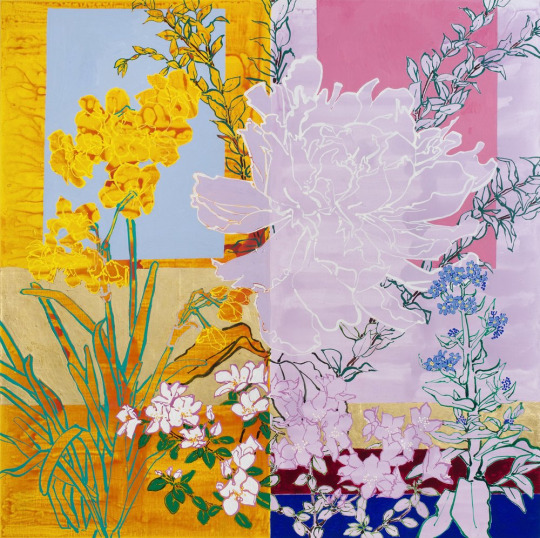
#4 False Food by Jerry Takigawa
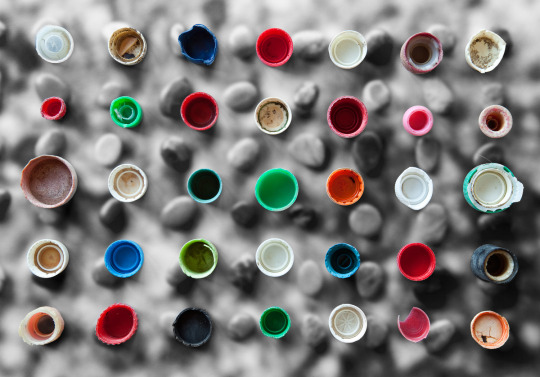
#5 I-Ching-T8 Series, 2022, Acrylic on Canvas by Maggie Jiang

#6 untitled (pareodolia 006) by John Richey

#7 Balloon rabbit by Jeff Koons
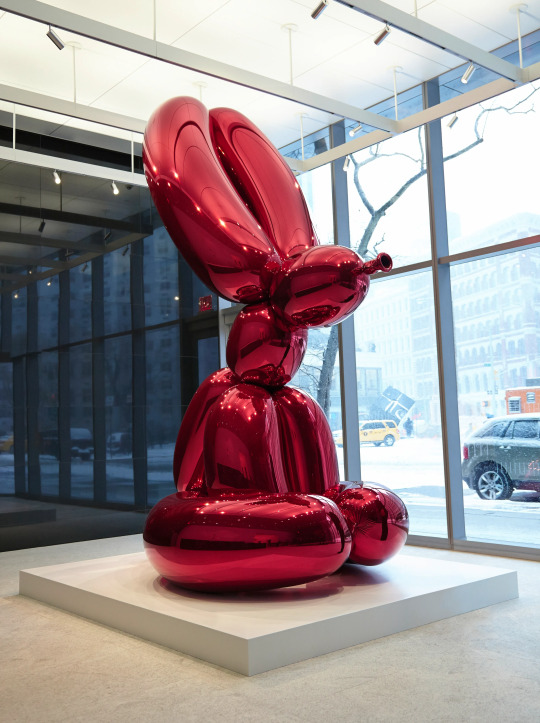
#8 Dream Gardens Mono 7 by Bruce Mclean
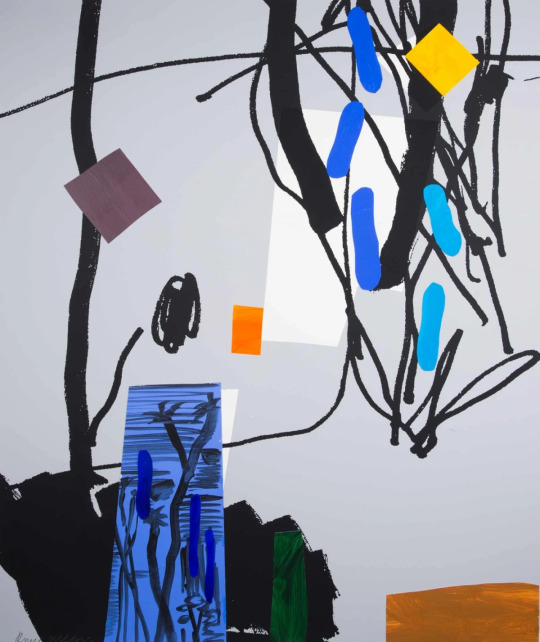
#9
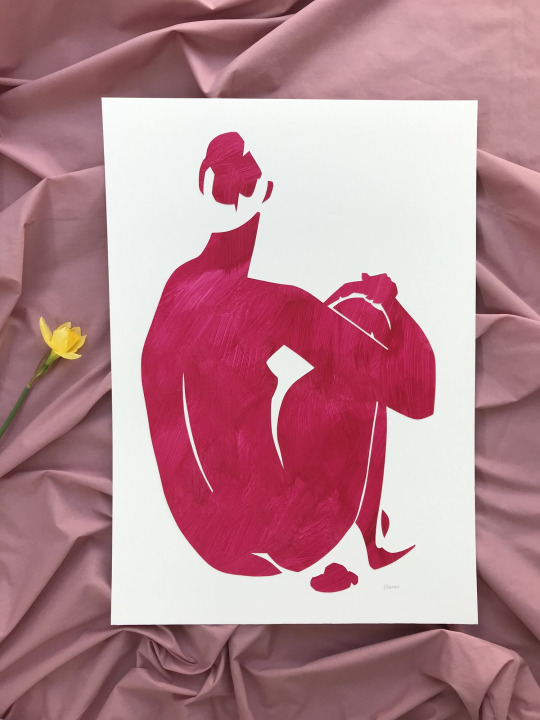
#10 Lonely Girl, 2022 by Art Jeeno
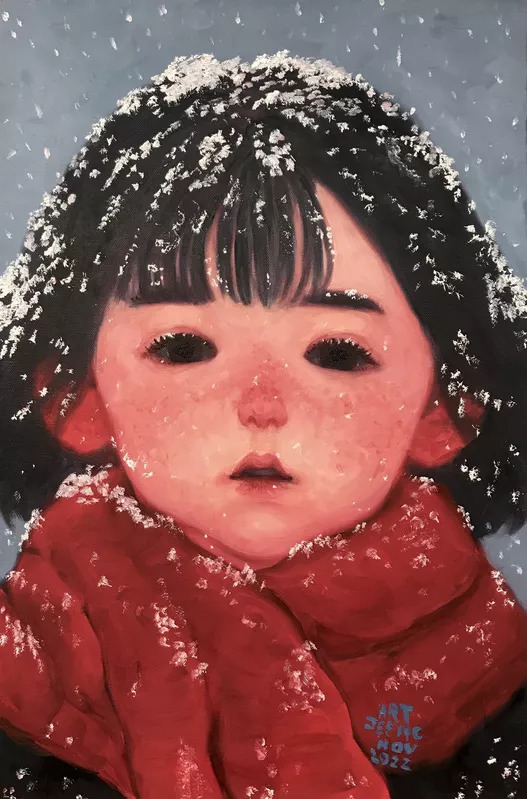
0 notes
Photo

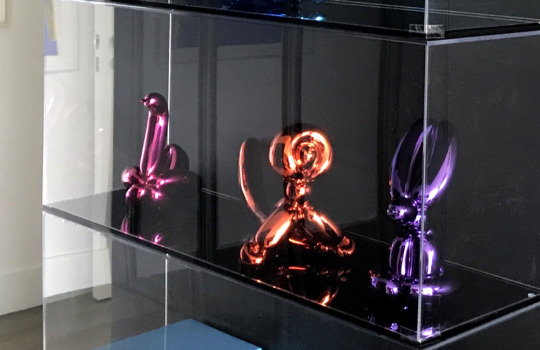
Balloon Swan, Rabbit, and Monkey
Jeff Koons
2019
0 notes
Photo
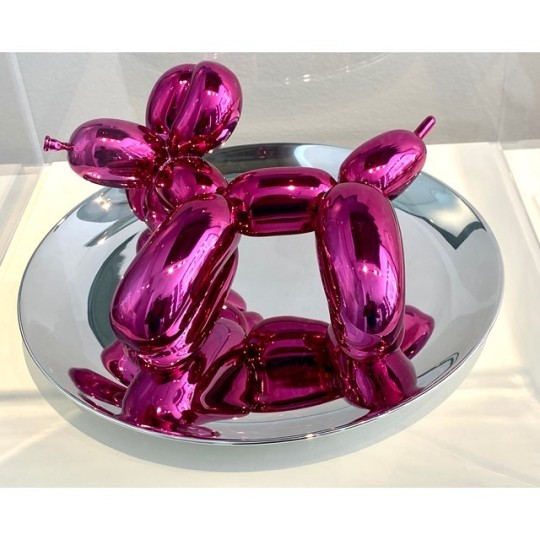
Jeff Koons x Skoufa Gallery : Balloon dogs; Monkey (orange); Swan (Magenta); Rabbit (violet). #skoufagallery #jeffkoons #bernardaud #porcelaine #balloondog #balloonmonkey #orange #magenta #balloonswan #balloonrabbit #ɪɴsᴛᴀᴘɪᴄ #photoofthedays #athensmylove🇬🇷❤️ (à SKOUFA GALLERY) https://www.instagram.com/p/CgE0qRIMNpH/?igshid=NGJjMDIxMWI=
#skoufagallery#jeffkoons#bernardaud#porcelaine#balloondog#balloonmonkey#orange#magenta#balloonswan#balloonrabbit#ɪɴsᴛᴀᴘɪᴄ#photoofthedays#athensmylove🇬🇷❤️
0 notes
Text
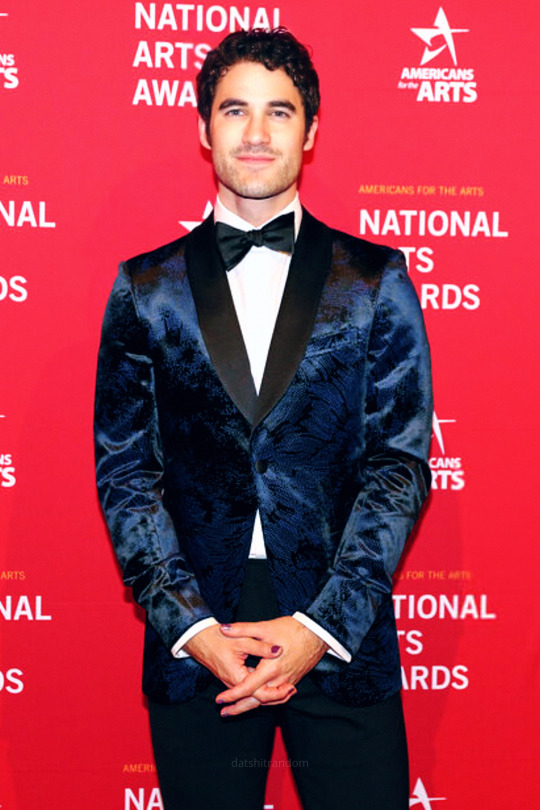
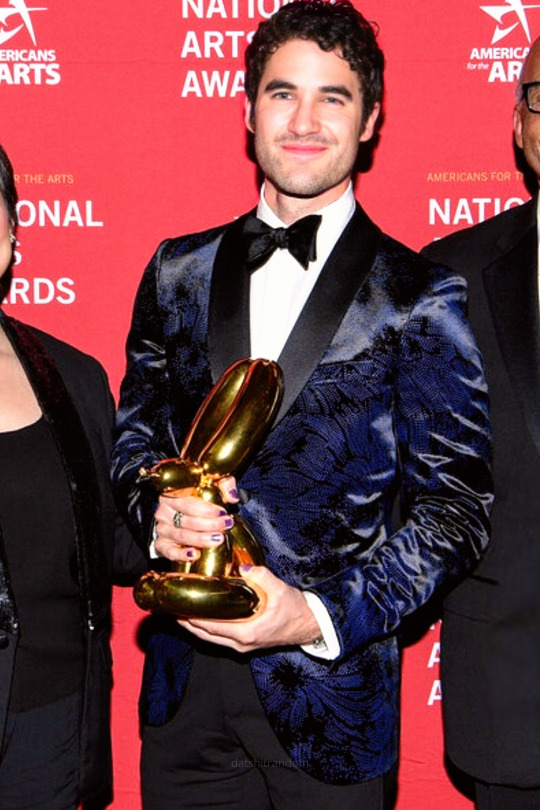

Darren Criss at the Americans for the Arts 2022 National Arts Awards | October 17, 2022
#Darren Criss#Americans for the Arts#National Arts Awards 2022#Ted Arison Young Artist Award#LQ#Jeff Koons' Balloon Rabbit#please do not repost
19 notes
·
View notes
Note
I'm 100% convinced modern art is just a way for rich people to launder money. "here's a sock I glued to a banana, $10k". Nothing weird going on here.
Now hold on a second, that's a great example- first, we need the context that artists, unless they are doing commissions, generally don't sell their art directly to collectors, it often goes through an intermediary, through art dealers and auctions.
So that begs the question- is that sock on a banana meant to just earn the artist some quick cash? Or is it there to say something to the art dealer, who's going to take a full half of the cut on average despite doing nothing but acting as a middleman? Is it meant to say something to the only people who could afford such a thing, the ultra-rich, and will treat it as an investment, rather than art, as they so often do?
Do you remember Banksy's shredded painting?
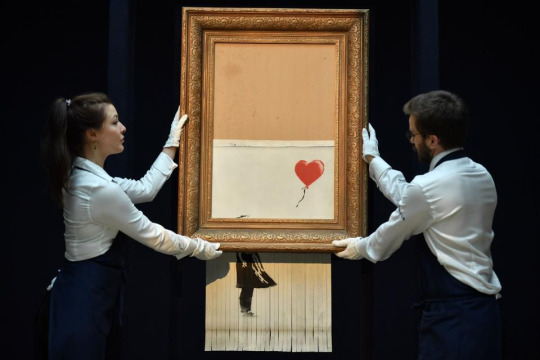
[ID: Banksy's 2018 painting Girl With A Balloon, which famously had a shredder concealed in the frame. It is half-shredded, and two gallery workers dressed in white, with white gloves and navy aprons, are calmly holding the frame. End ID]
What was the context of that? Just to get a reaction? Or was it saying something about ascribed value, or how art is treated after it's purchased by private collectors? Is this still valuable after it's been shredded? The auctioneers certainly thought so, because they put it back together, ruining the point of the whole thing.
Money laundering is such an easy answer, but the amount of artists who feel positively about their art being bought for millions and then squirreled away and sat on for value are...vanishingly few, to say the least. Remember what I said in my original post about the vacuum? About how so much ready-made art, the kind that people hate so much, is often about the fetishizing of commodities? Sure, it's always nice to get a paycheck, but do you think the same artist who makes art about that would be happy to have their own works treated the same way? As cool things to be bought and sold and looked at sometimes, rather than something the many can enjoy and contemplate?
The answer when you see something stupid being sold at ridiculously high prices is often one of three things: One, it could be that it's something that perhaps you don't see the value in, but is in fact a sort of masterpiece in the traditional sense, a piece that one makes to show that they have mastered a medium.
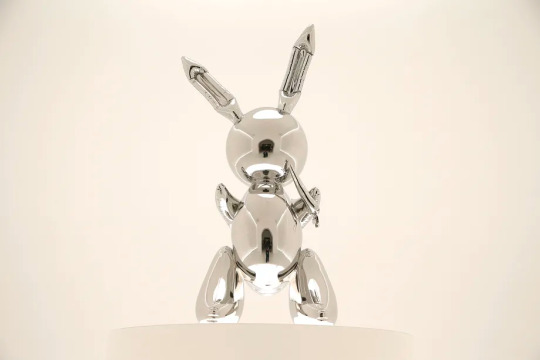
[ID: Jeff Koons's 1986 Rabbit, a three-foot-tall metal sculpture meticulously sculpted to look like a mylar balloon shaped like a rabbit with a carrot, rather than stainless steel. It was sold at auction for 91.1 million. End ID]
This rabbit may not look very impressive to you sitting there, but you have to take into account what it took to made this, the skill that went into this, the years of training and trial and error, and the ascribed value that other people see in it-the amount of people who see this, see themselves, feel nostalgia for their childhood, come away with meaning. There's a lot more here than just a metal rabbit, and the age specifically adds value- would the Mona Lisa be as valuable as it is if it weren't from the Renaissance? There’s also plenty of art that, while not necessarily technically impressive, conveys a narrative and emotional weight so heavy, that others can’t help but empathize and ascribe it with high value based on it’s meaning alone. You may need the artist’s own words to help you reach this point, but finding something deeply emotional in otherwise mundane objects is a great experience. A book full of words you can read is often more valuable than a book full of words you can’t, after all.
The second thing that it could very easily be, is that the artist is making fun of the people who are actually seeing real profit, and the whole business of art buying and selling.
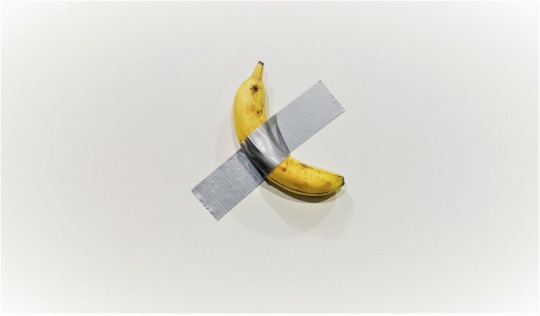
[ID: Maurizio Cattelan's 2019 Comedian, a ripe banana duct-taped to a blank white wall. End ID]
As I said at the start, the average commission an art dealer will take is 50%- and that's at the beginning, when the artist hands over their work. Every time the work changes hands after that, the artist will rarely see a dime. The people who are making money here aren't the artists. In fact, up until recently, the ultra wealthy were using the purchase of art for tax evasion- if you were an artist, and your art got sold for millions years after you had initially sold it for maybe a few thousand after days of thought and labor and years of experience and training, only to know it was bought for tax evasion and wealth accumulation, wouldn't YOU get pissed? The banana itself was a mockery of this whole thing. Who would buy a banana for 120k? Who on earth would justify tax fraud and investment in a fruit taped to a wall? While that in and of itself is the joke of the piece, it was lost on many of us who aren't billionaires, simply because most of us don't have the context.
And don't just take my word for it, here's a whole article full of art-world context most people don't have, here's several articles about the banana.
And while we're at it, bc of course it always comes back to capitalism, here's a summary Marx's general formula for capital, which is promise is relevant and will help you understand why rich people pay mad money for this shit.
TL;DR- I promise you, the artists who make socks on bananas that sell for huge amounts of money know it's bullshit just as much as you do, get much less money out of it than you think, and they're doing it on purpose to piss off the ultra-wealthy that only want the art to add to their dragon-hoard of investments and tax fraud.
#spitblaze says things#long post#anyway if theres any money laundering going on i promise you its not on the artists end#i keep fuckin forgetting to id pictures in my posts BUT I REMEMBERED THIS TIME
1K notes
·
View notes
Photo
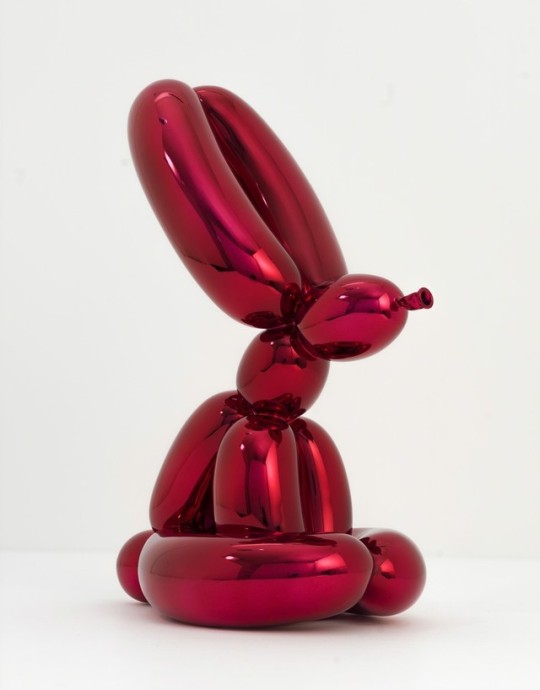
Artist of the Day
Jeff Koons
Balloon Rabbit red (Celebration Serie)
2017
Porcelain
28 × 14.5 × 21 cm
Jeff Koons plays with ideas of taste, pleasure, celebrity, and commerce. “I believe in advertisement and media completely,” he says. “My art and my personal life are based in it.” Working with seductive commercial materials (such as the high chromium stainless steel of his “Balloon Dog” sculptures or his vinyl “Inflatables”), shifts of scale, and an elaborate studio system involving many technicians, Koons turns banal objects into high art icons. His paintings and sculptures borrow widely from art-historical techniques and styles; although often seen as ironic or tongue-in-cheek, Koons insists his practice is earnest and optimistic. “I’ve always loved Surrealism and Dada and Pop, so I just follow my interests and focus on them,” he says. “When you do that, things become very metaphysical.” The “Banality” series that brought him fame in the 1980s included pseudo-Baroque sculptures of subjects like Michael Jackson with his pet ape, while his monumental topiaries, like the floral Puppy (1992), reference 17th-century French garden design.
American, b. 1955, York, Pennsylvania, based in New York, New York
courtesy of artsy.net
2 notes
·
View notes
Text
Contemporary Sculpture Artist
Jeff Koons

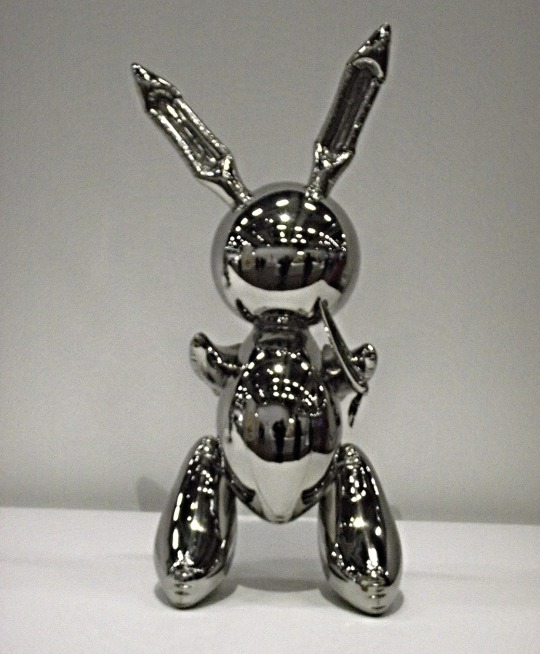
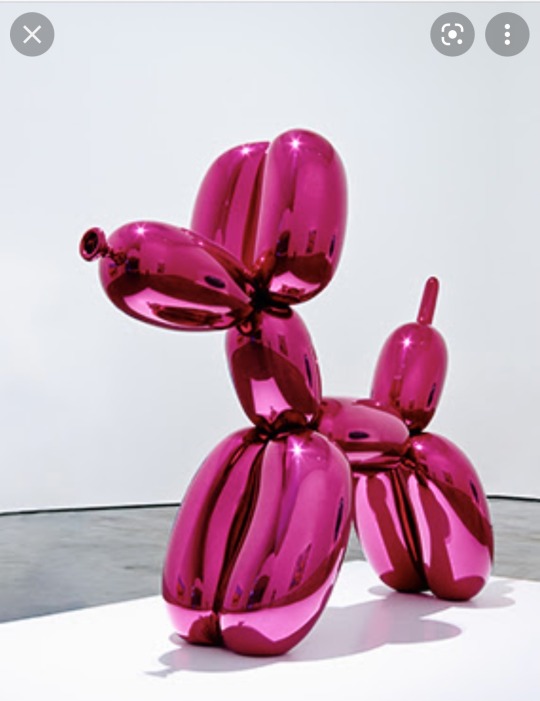
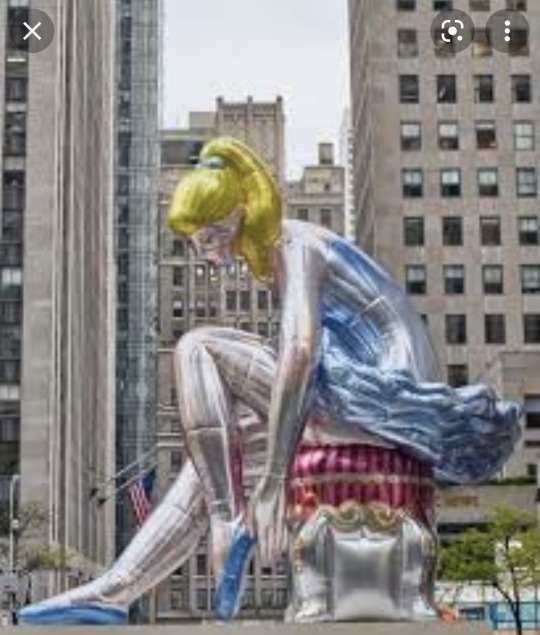

Jeff Koons is a contemporary artist that was born in York, Pennsylvania in 1955. He studied at the Maryland institute college of art in Baltimore and the school of art institute of Chicago. Today Jeff Koons is one of the greatest contemporary sculpture artist in the world.
What is Jeff Koons known for ?
Jeff Koons is recognised for his work dealing with popular culture and his sculptures depicting everyday objects, including ballon animals. He is known for his iconic sculpture rabbit And balloon dog And now he lives and works in both New York City and York, Pennsylvania.
http://www.jeffkoons.com/biography-summary
3 notes
·
View notes
Text
Postmodernist-Artmaking
Postmodernism is a broad movement that developed in the mid- to late 20th century. It is the idea clarifying concepts that overlap, and sometimes explained by contrasting it to modernism, however, modernism and postmodernism co-exist today and influence one another. The concepts being used can also be useful for making art according to Barrett. For example; Simulate is to imitate or to copy. The simulacrum copies of things that no longer have an original concept. This concept was developed by Jean Baudrillard, a French theorist of postmodernism, is a prominent theme explored by postmodernist. Cartoon figures such as Edna Mode from the movie Incredibles is just one example of simulacra. Edna is based off of a costume designer, Edith Head. Edith Head herself has worked hard and crafted many unique designs that lead her to earning 8 academy awards between 1949-1973. Postmodernism art-making is a movement contradicts the aspects of others, it can be shown through more than just Simulate. It can also be seen in intermediate, multimedia art, photography, conceptual art, and etc.
1) Escaping the Confines of Museums- Barbra Kruger, Belief + Doubt, Sculpture, August 20th, 2016
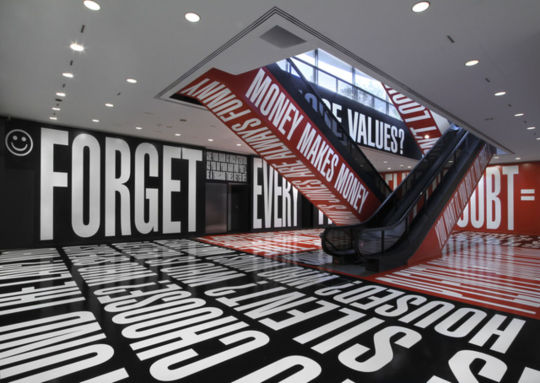
2) Collapsing Boundaries between “High and Low”- Takashi Murakami and Supreme, Tripych Skate Decks, 2007

3) Rejecting Originality- Richard Prince,School Nurse, Acrylic and inkjet on canvas, 2005

4) Jouissance- Kristen Liu Wong,Bound to be Together, Acrylic, 2016

5) Working Collaboratively-David Meggs, and Bask, Iron Pueo, spray paint Mural, 2014
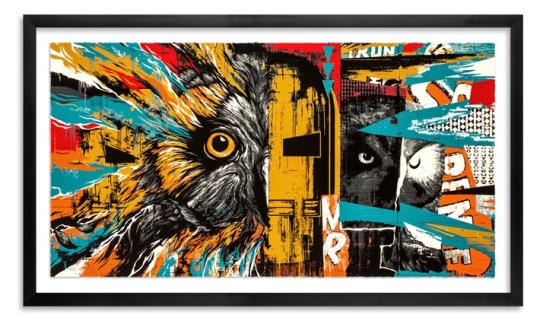
6) Appropriating- Lin Onus, Michael and I Are Just Slipping Down to the Pub for a Moment, archival ink, 2000
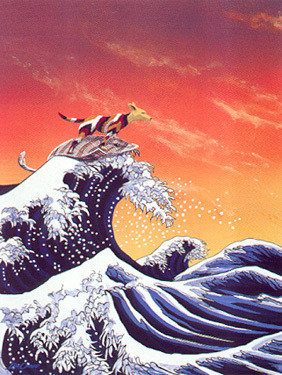
7) Simulating- Brad Bird, Edna “E” Mode, animation, 2004
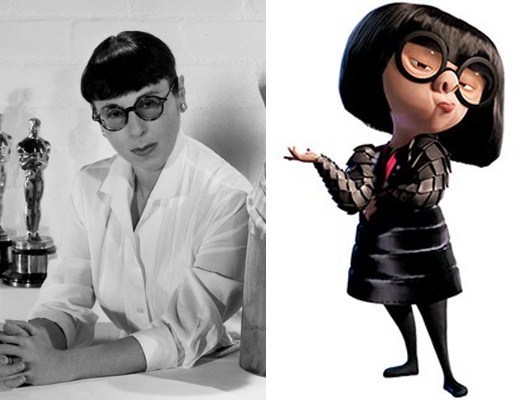
8) Hybridizing- Roger Shimomura, self portrait American Pikachu, Acrylic, 2010

9) Mixing Media- Jeff Koons, Balloon Rabbit, Stainless Steel, 1986
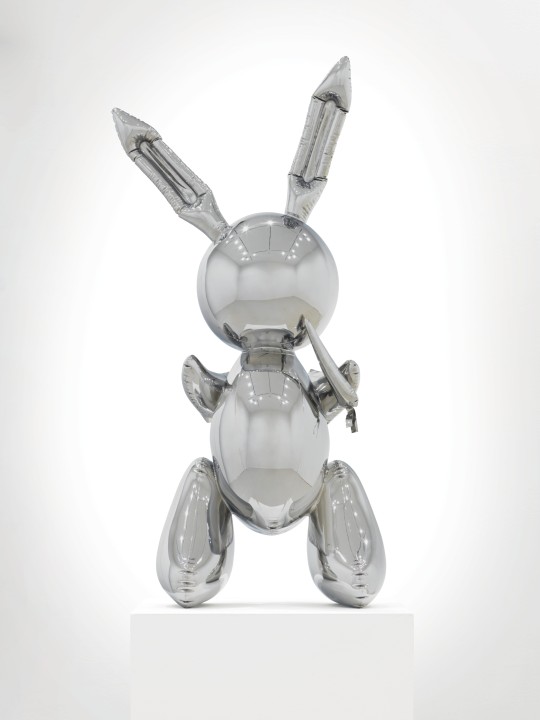
10) Layering- Ah Xian, A Journey to China, Porcelain, 1990
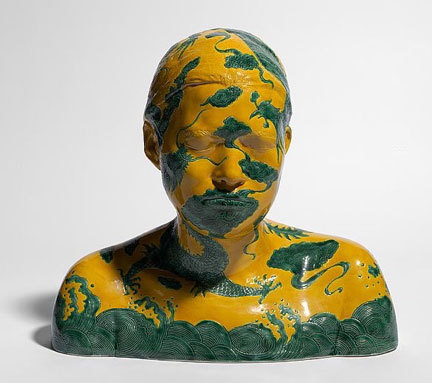
11) Mixing Codes- Michael Ray Charles, (Forever Free) Dress Your Best, Acrylic latex, stain and copper penny, 1999
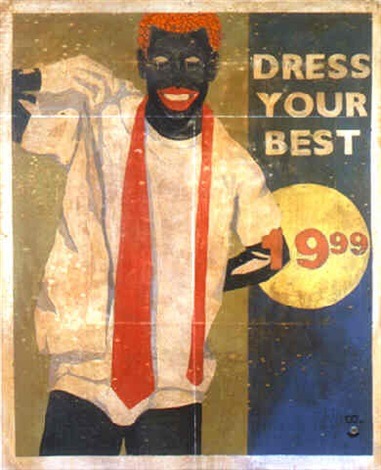
12) Recontextualizing- Ai WeiWei, Han Jar Overpainted with Coca-Cola Logo, Earthenware, paint, 1995

13)Confronting the Gaze- Tracey Emin, My Innocence, One colour lithograph on Somerset Velvet paper, 2019

14) Facing the Abject- Kiki Smith, Women with Wolf, Porcelain, 2003

15) Constructing Identities- Gran Fury, Let the Record Show, prints, 1987
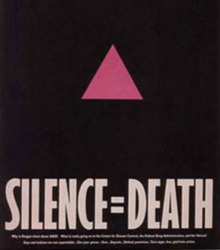
16) Using Narratives- Eric Fischl, Without Title, lithograph, 2009
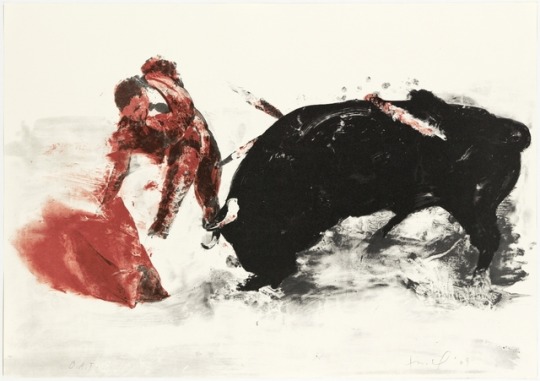
17) Creating Metaphors- Do Ho Suh, Fire Extinguisher, cotton paper, 2017
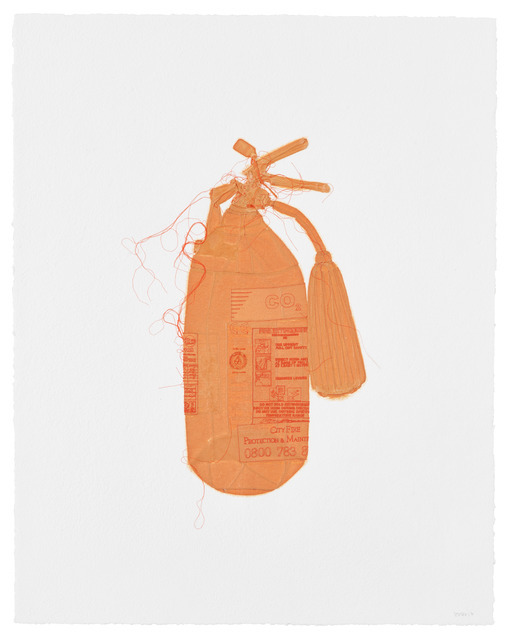
18) Irony, Parody, and Dissonance- James Luna, Sometimes I get so Lonley, photograph, 2011

14 notes
·
View notes